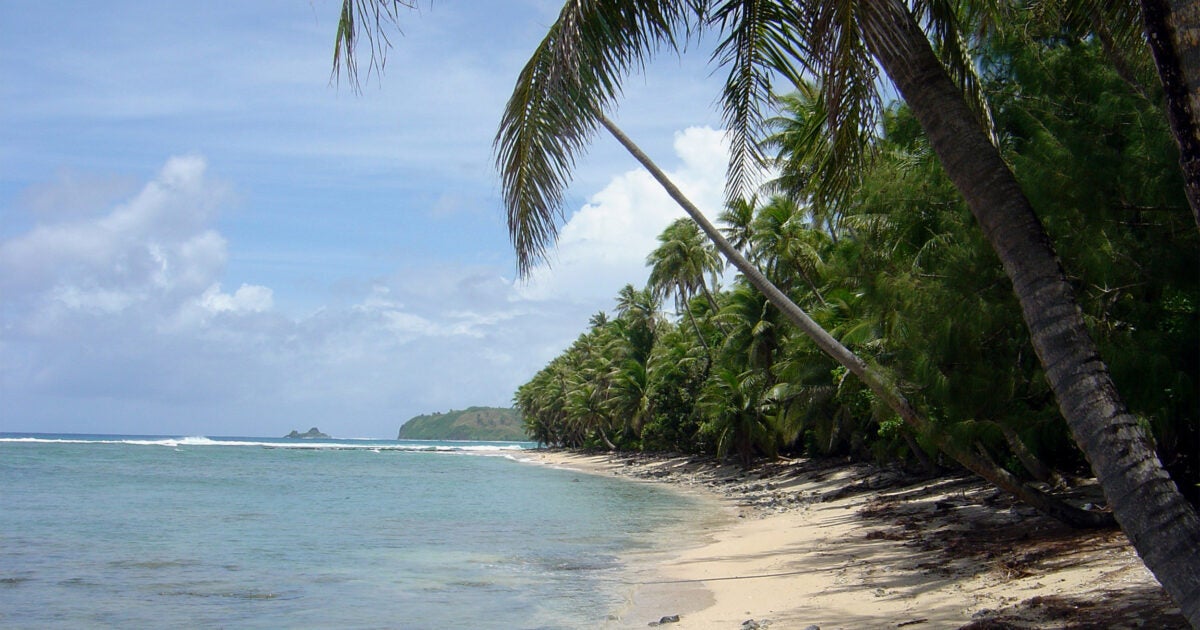Researchers ran these results through mathematical simulations, which showed that this kind of genetic drift in the two groups could not have happened randomly and lead them to the conclusion that the cause was most likely the result of women not moving around to different islands as much as men.
“Females certainly moved to new islands, but when they did so they were part of joint movements of both females and males” said Reich. “This pattern of leaving the community must have been nearly unique to males in order to explain why genetic differentiation is so much higher in mitochondrial DNA than in the rest of the genome.”
The new study from an interdisciplinary team of geneticists and archaeologists quintuples the body of ancient DNA data from the vast Pacific region called Remote Oceania, the last habitable place on earth to be peopled. It also provides surprising insights into the extraordinarily complex peopling of one of Remote Oceania’s major subregions.
Humans arrived and spread through Australia, New Guinea, the Bismarck Archipelago, and the Solomon Islands beginning 50,000 years ago, but it wasn’t until after 3,500 years ago that they began living in Remote Oceania for the first time after developing the technology to cross open water in long-distance canoes.
This expansion included the region called Micronesia — about 2,000 small islands north of the equator, including Guam, the Marshall Islands, the Caroline Islands, Palau, and the Northern Mariana Islands.
It’s long been a mystery what routes people took to arrive in the region. The discovery that there were five streams of migration into Micronesia helps bring clarity to this mystery and the origins of the people there today.
“These migrations we document with ancient DNA are the key events shaping this region’s unique history,” said Liu, a postdoctoral fellow in Reich’s lab and the study’s lead author. “Some of the findings were very surprising.”
Of the five migrations, three were from East Asia, one from Polynesia, and one involved Papuans from the northern fringes of mainland New Guinea. This represented a new wrinkle for researchers because a prior stream of migration to the southwest Pacific and Central Micronesia came not from the mainland but New Britain, an island chain to the east of it.
The researchers also found that present-day Indigenous people of the Mariana Islands in Micronesia, including Guam and Saipan, derive nearly all their pre-European-contact ancestry from two of the East Asian-associated migrations the researchers detected. It makes them the “only people of the open Pacific who lack ancestry from the New Guinea region,” Liu said.
The researchers consulted with several Indigenous communities in Micronesia for the study. This is the Reich group’s fourth publication of original ancient DNA data from remote Pacific islands.
“It’s important that when we do ancient DNA work, we don’t just write a paper about the population history of a region and then move on,” Reich said. “Each paper raises as many new questions as it answers, and this requires long-term commitment to follow up the initial findings. In the Pacific islands there are so many open questions, so many surprises still to be discovered.”
Supporters for this study included the National Institutes of Health, the John Templeton Foundation, the Allen Discovery Center, and the Howard Hughes Medical Institute.


